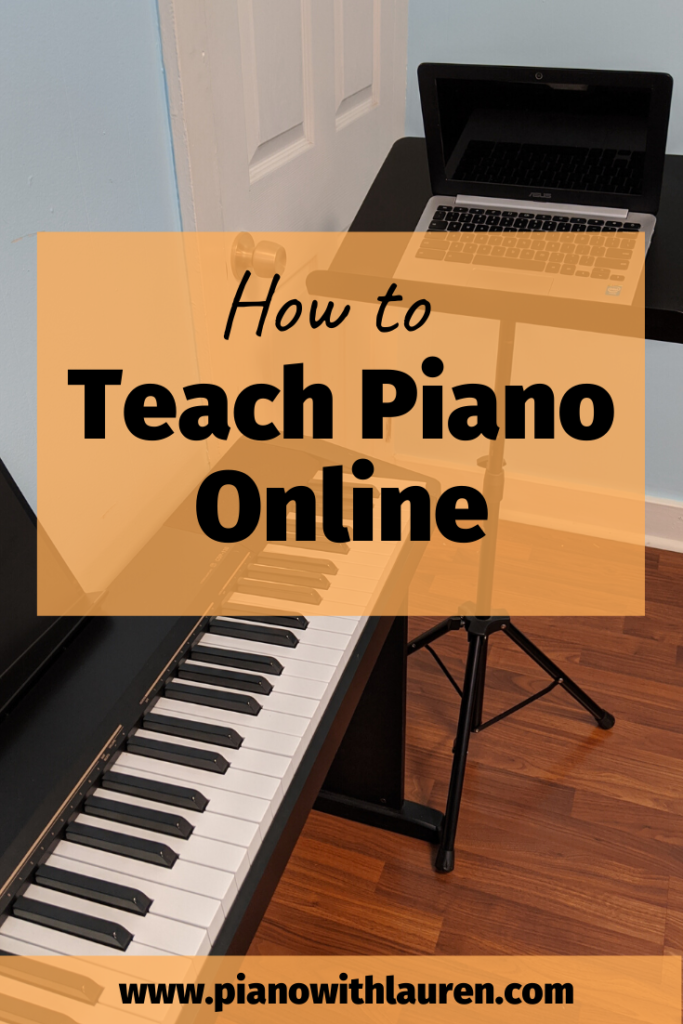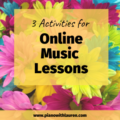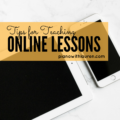This post may contain affiliate links. As a Sheet Music Plus and Amazon Associate, I earn from qualifying purchases. That means I make a small commission (at no additional cost to you) if you purchase something from an affiliate link.
Over the last five years, I have continued to teach piano lessons online. One of my favorite things about teaching online is that it has allowed me to keep students in my studio who have moved away. (2020 Update: The COVID-19 pandemic of 2020 is making teaching online lessons a must!)
Through teaching piano lessons online, I have also watched my students become more independent learners. I have students write their own assignments down and mark the score themselves. They also become good listeners.

Teaching piano lessons online requires new skills of the teacher. Here are some essentials for teaching piano lessons online.
The Setup
Your setup does not need to be elaborate or high-tech. You can keep it simple. You will need the following things:
- A device with a built-in web-cam (phone, tablet, or computer)
- A platform such as FaceTime, Skype, or Zoom
- A good internet connection (at least 5-10 mpbs). If your connection is not reliable, use an ethernet cable and laptop. If you need to use an ethernet cable, you can also purchase a lightning adapter to use with an iPad or iPhone.
Set your device near the piano so that students can see your hands on the piano. You will want to teach near the piano so that you can play for students.
You can set your device up by using a music stand or tripod for your device. If those 2 things are not available, you can simply use a chair or table and stack books/pillows up to get your device at the right height and angle.
I personally do not like to put my device on the piano, whether it be on the side or music rack. I feel this looks unprofessional. Yes, you can teach that way if needed! But I think it’s important to have a good visual for students.
Other Tips for Teaching Piano Online
- I have found that talking less is conducive with online lessons. As teachers, we are used to talking a lot during lessons. In online lessons, I prefer to lessen my talk time. Try not to talk while the student plays. It is confusing for them. Let the student play for you and then give concise feedback.
You can use the correction of notes, dynamics, or rhythms to develop your student’s ears. In lieu of talking and explaining, play an example for your student and see if they can match your playing. Online lessons are a great time to incorporate ear training into lessons.
I like to use a small white board in lessons in case I need to notate something during the lesson (such as a musical symbol or note).
- Use the same edition of sheet music as your student. Be sure both of your measures are numbered so that you can easily refer to the music using these.
- Rather than trying to keep online lessons *exactly* the same as in-person lessons, use this time to explore other ways to teach (like more listening examples).
- For assignments, you can have students write down their own assignments throughout the lesson or email the assignment shortly after.
- Take notes for yourself throughout the lesson if needed.
In addition to your own setup, you will also need to help your students get setup. I’ve created a guide to help parents and students get set up for online lessons.
Download the Online Lessons Guide for Parents & Students

Lauren teaches piano to students of all ages. She enjoys creating resources for her students and teachers. She is the author of Ready for Theory®. For personalized help, check out the consultations page for teachers.





Thank you Lauren I have found this very helpful